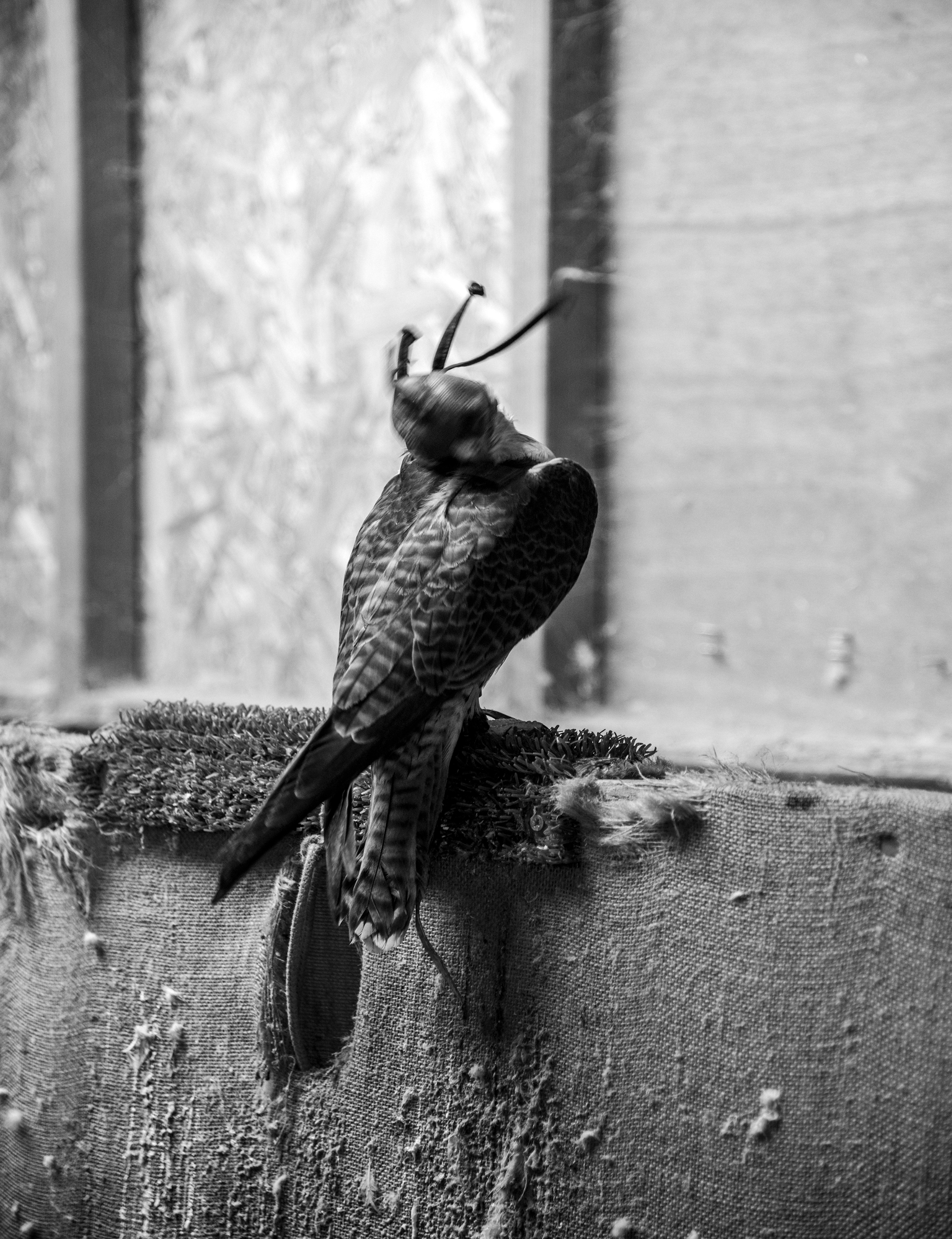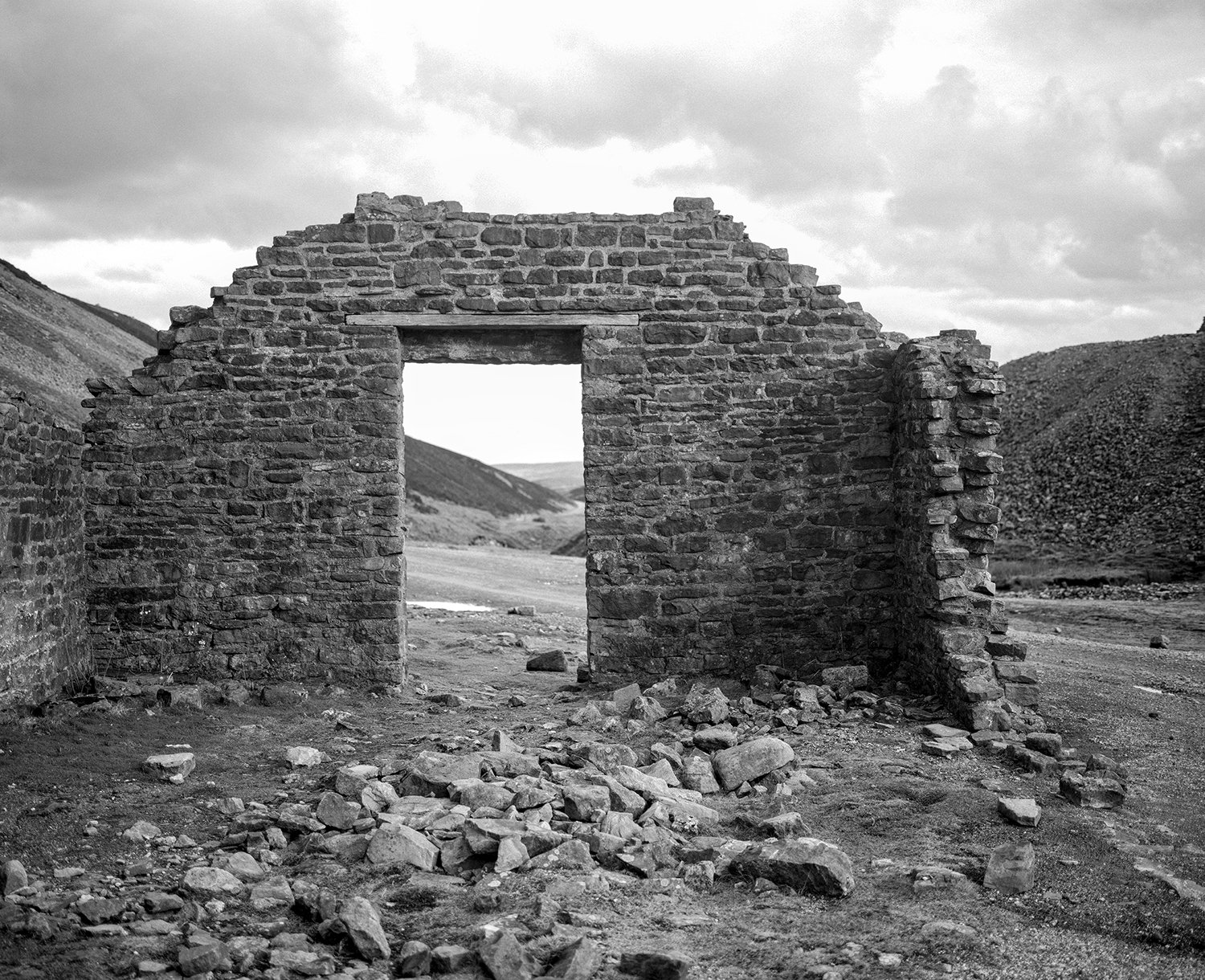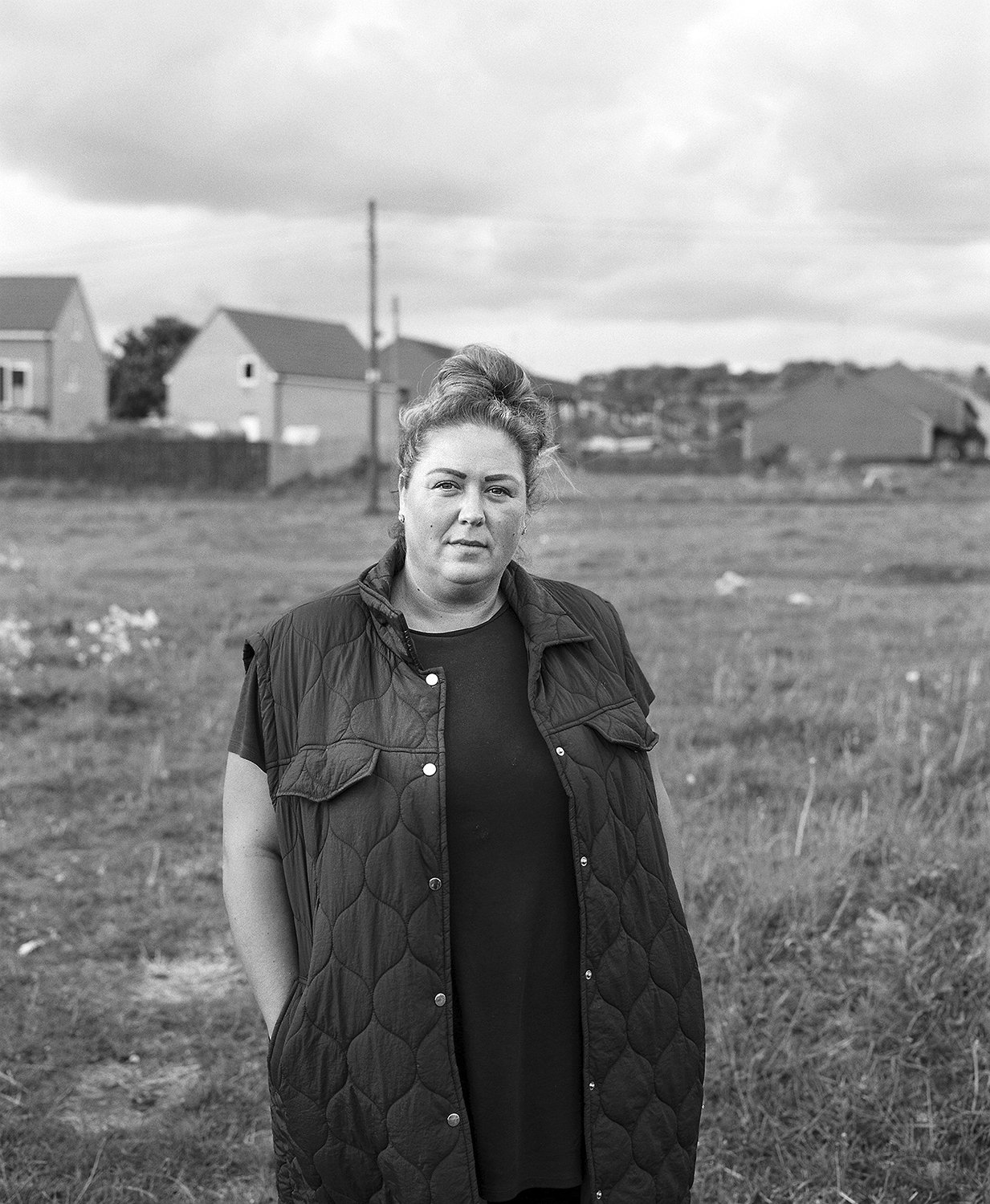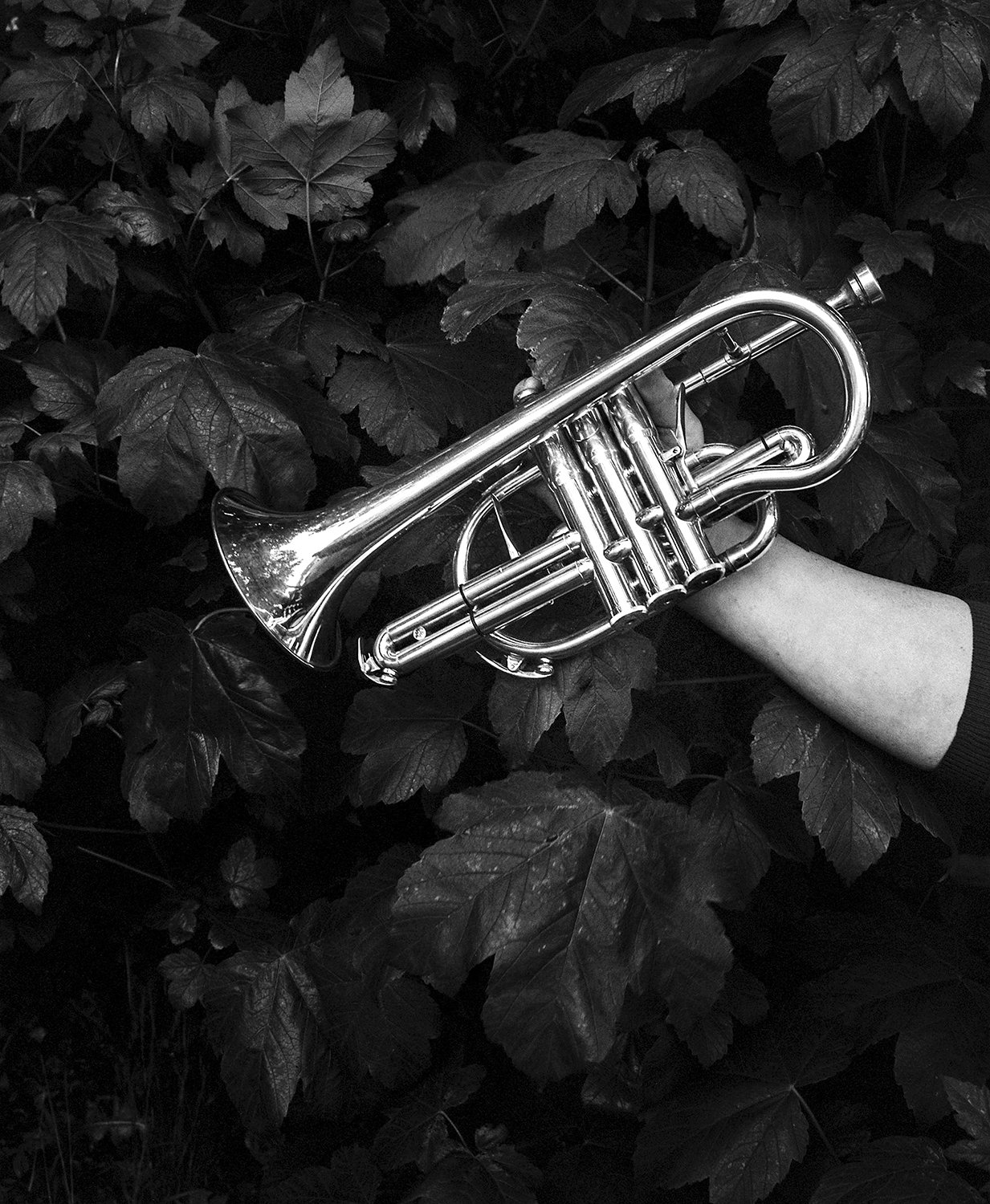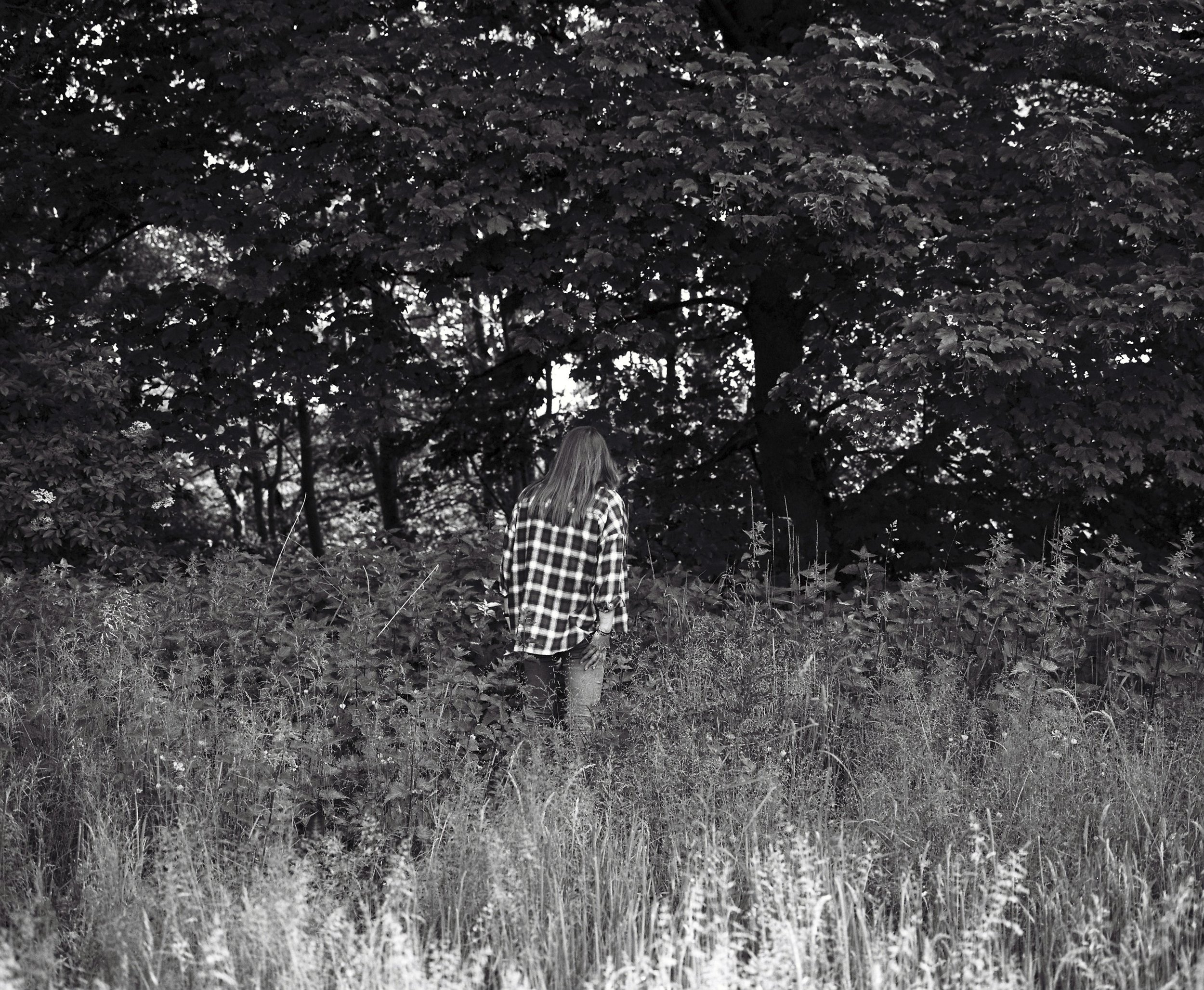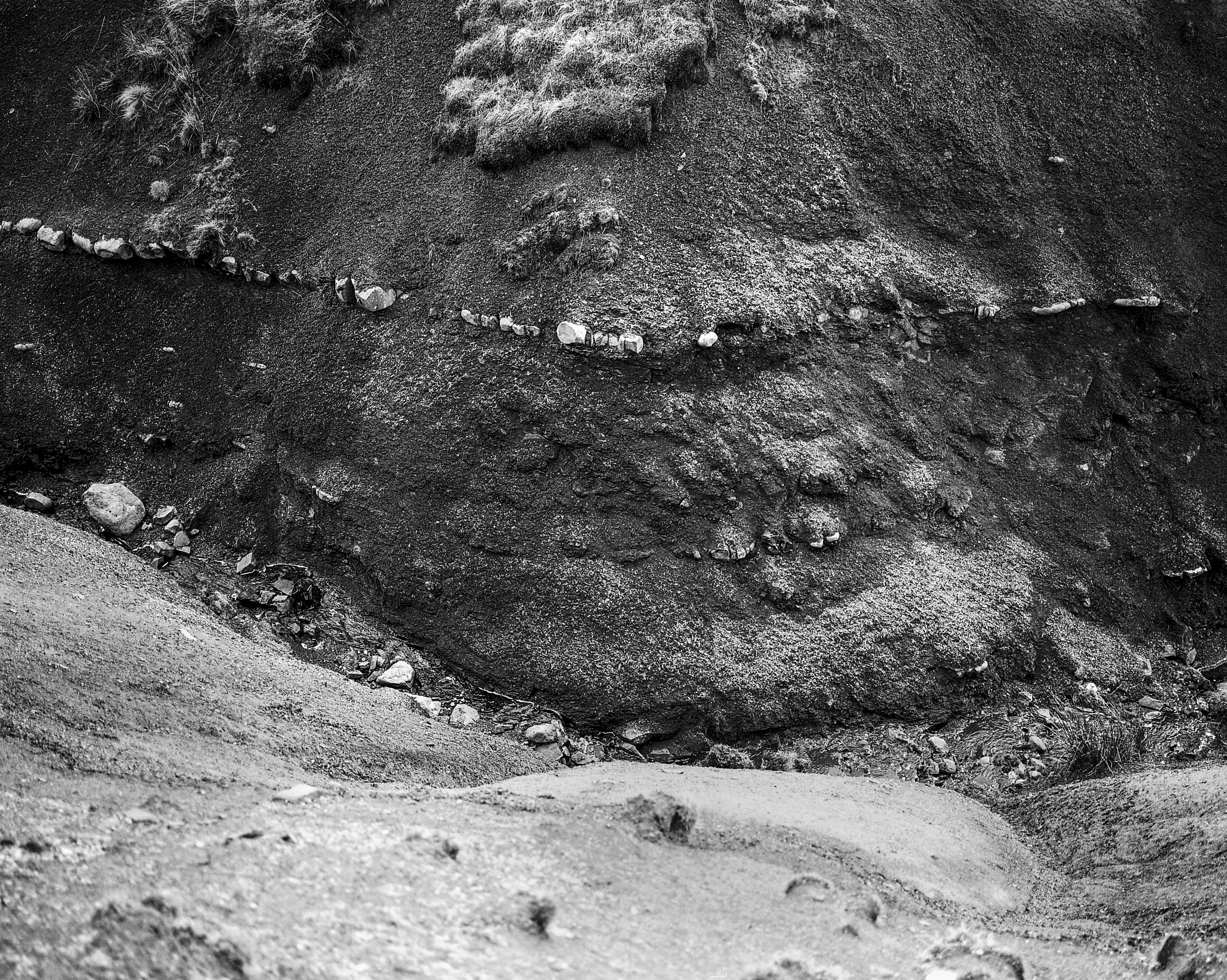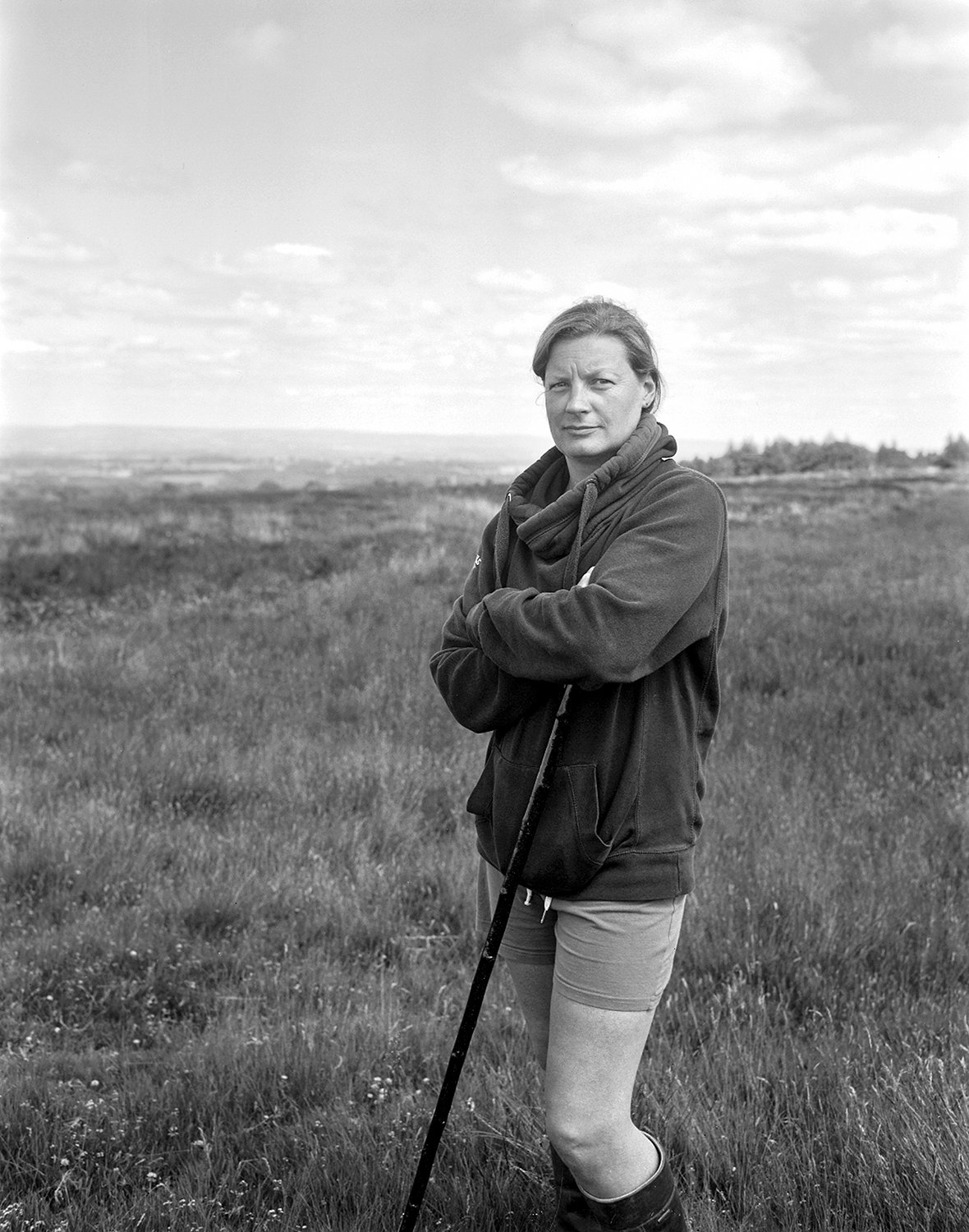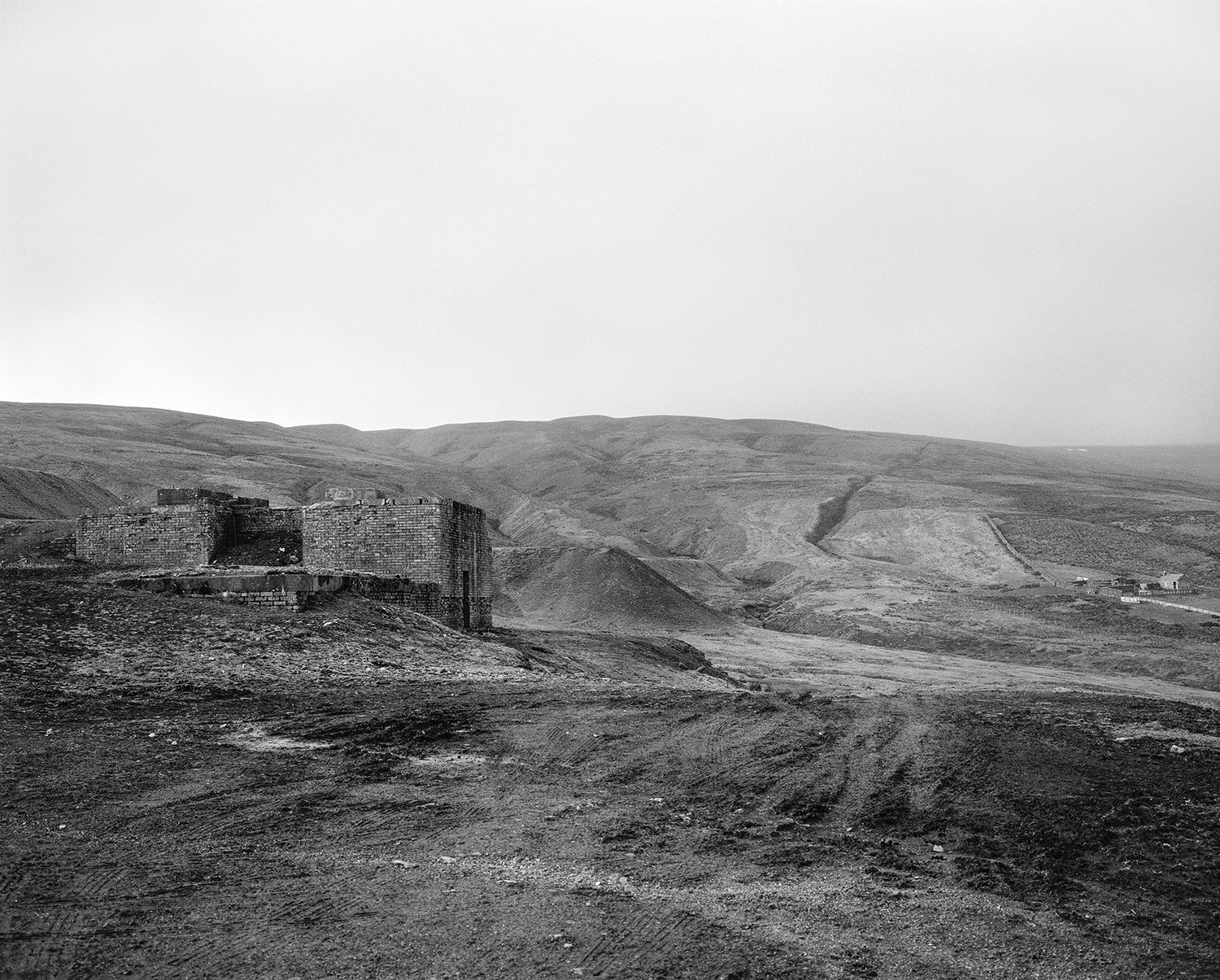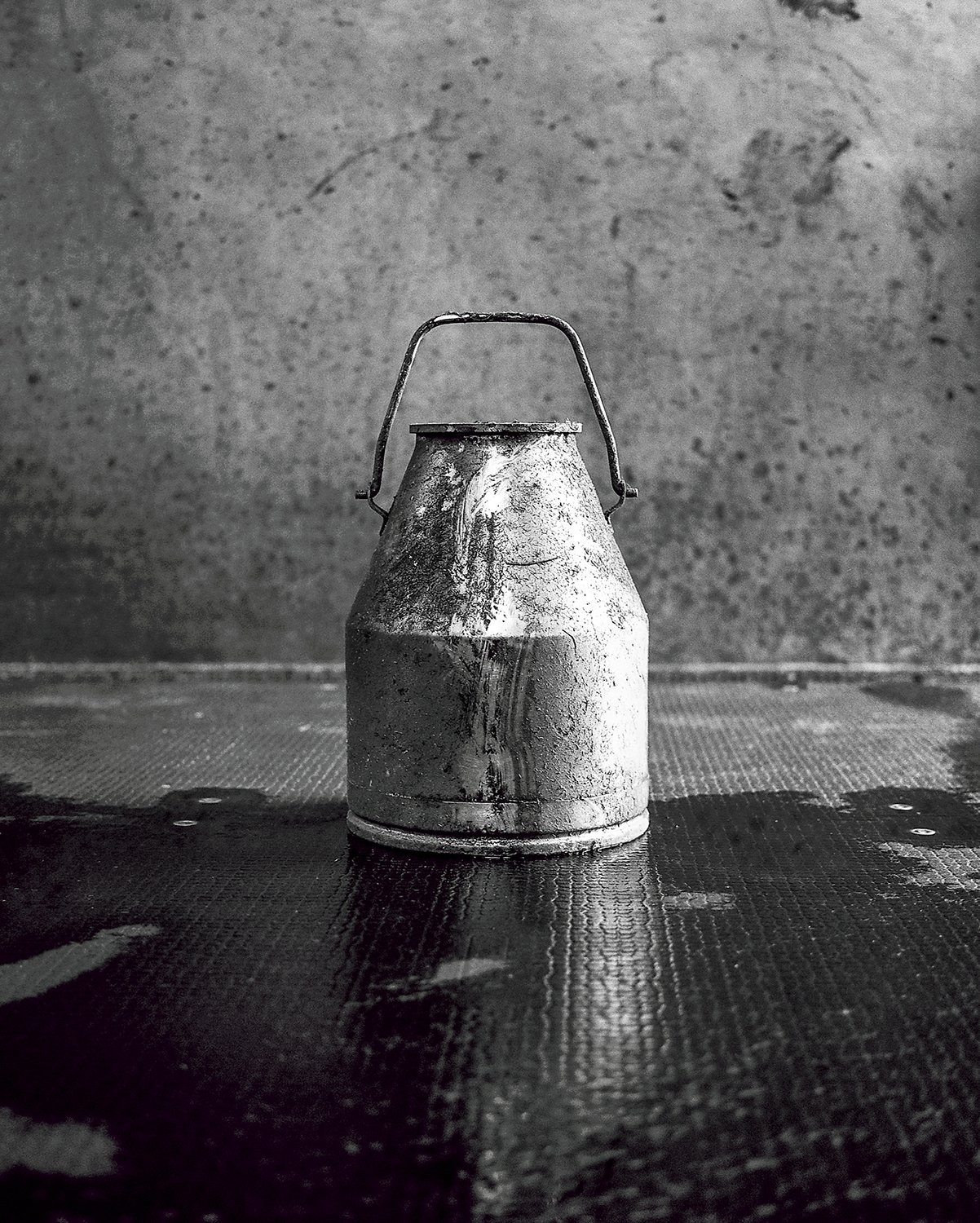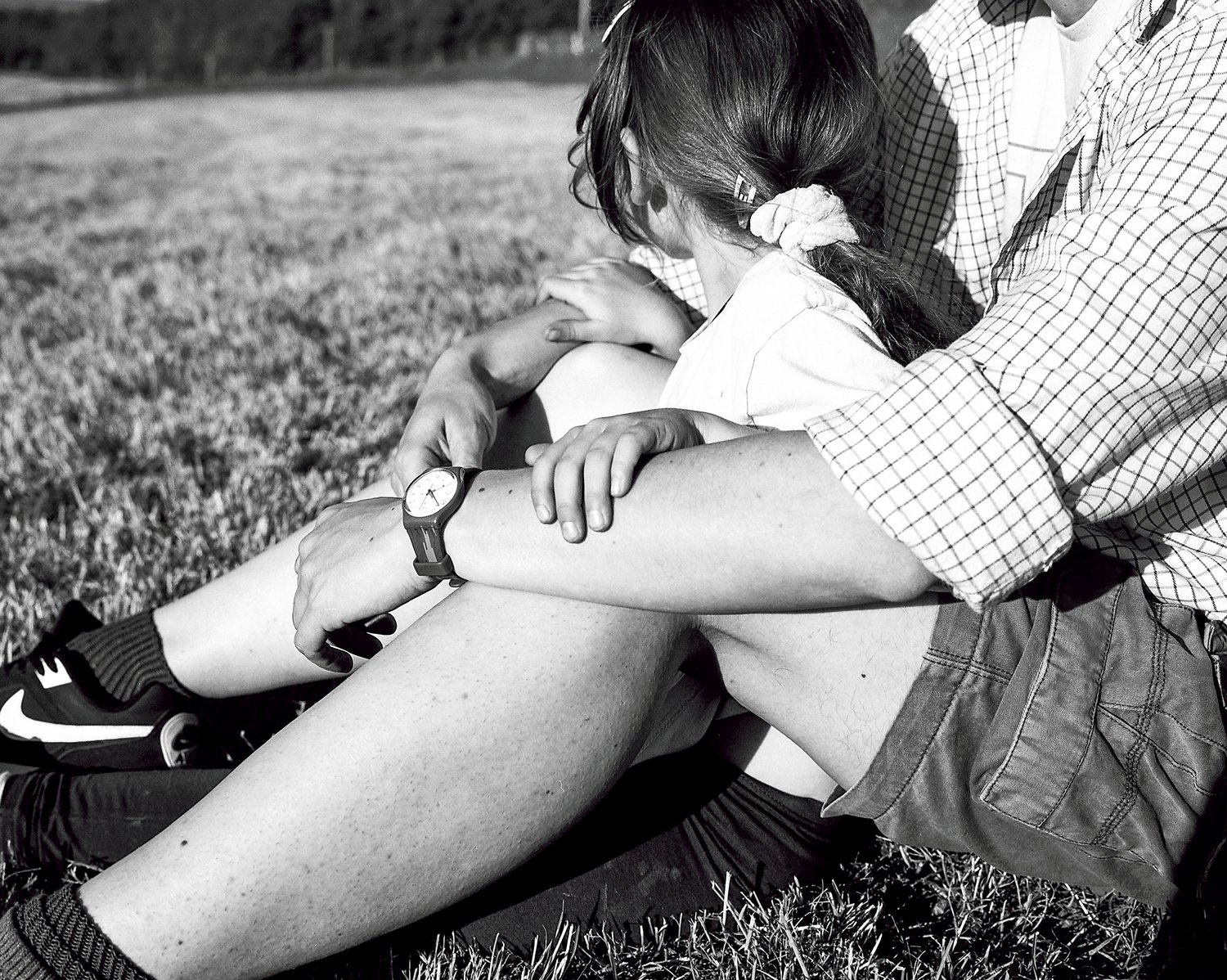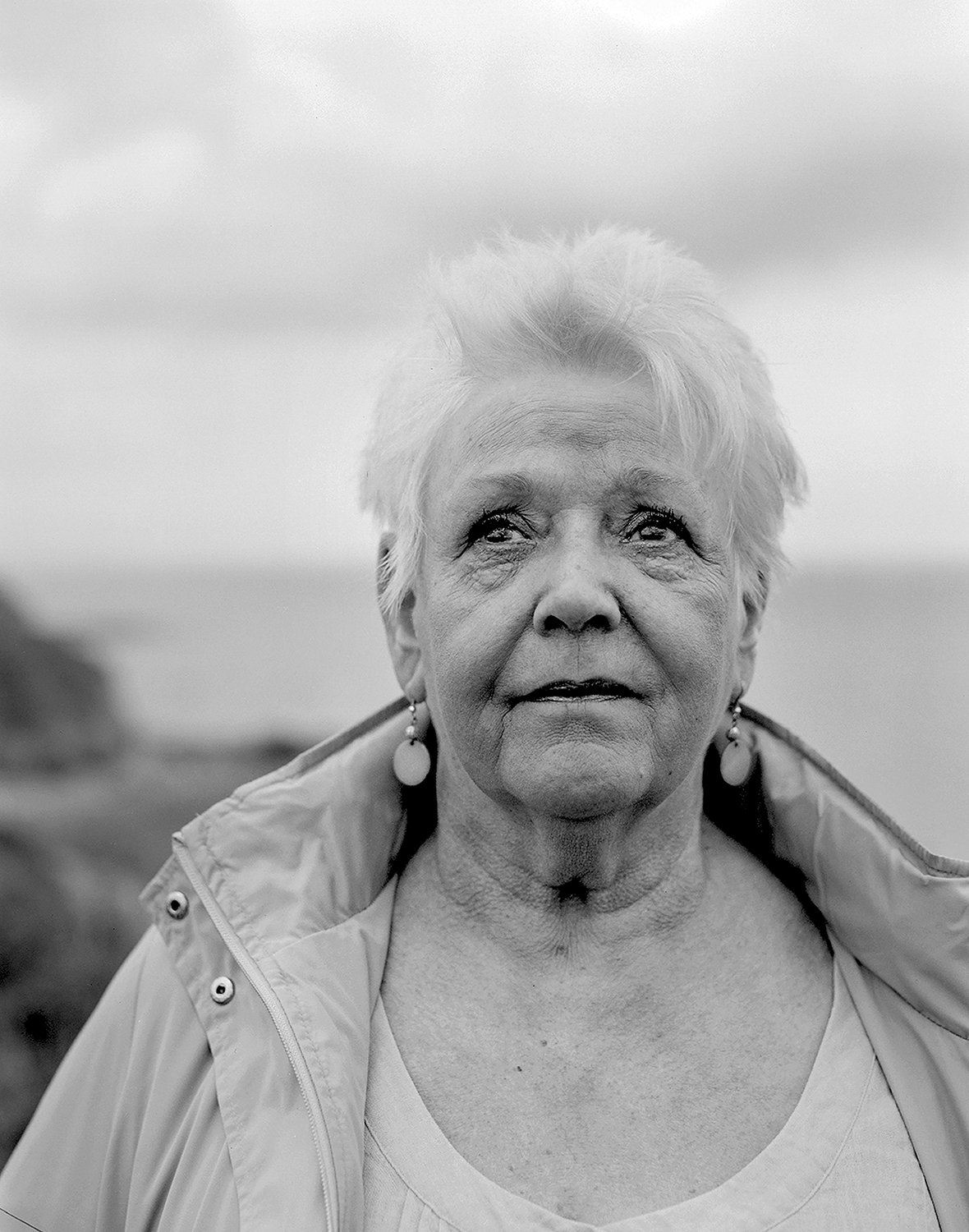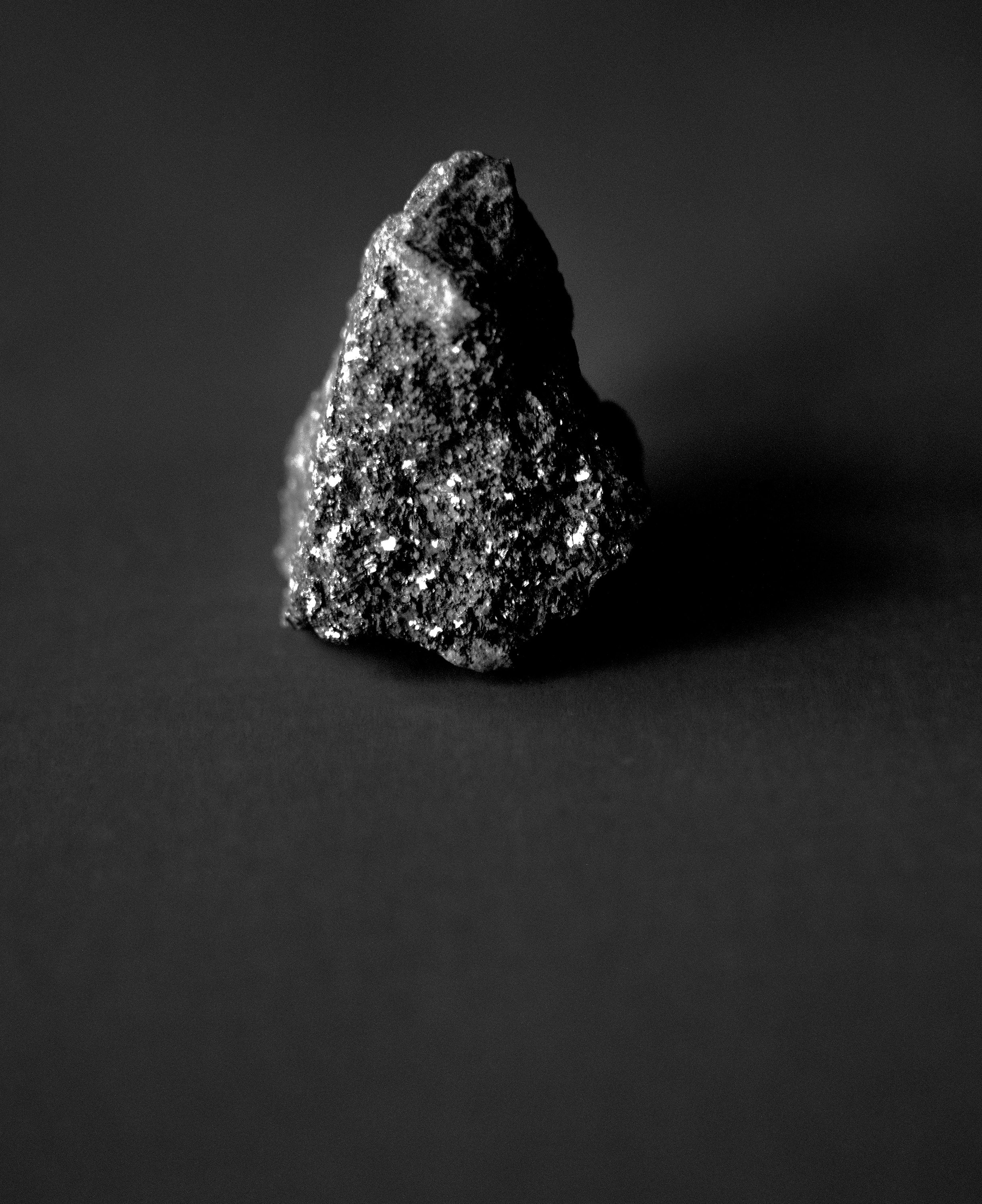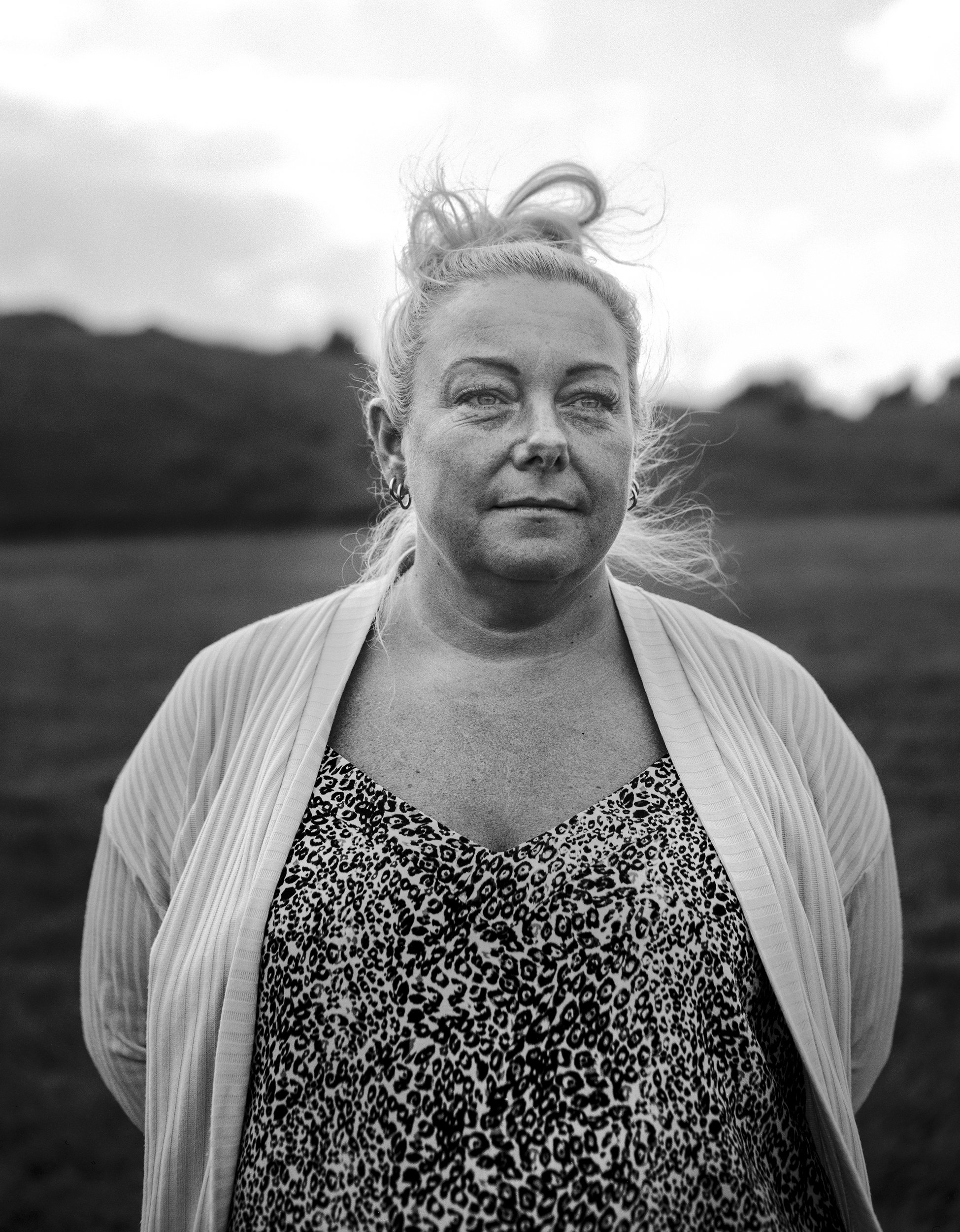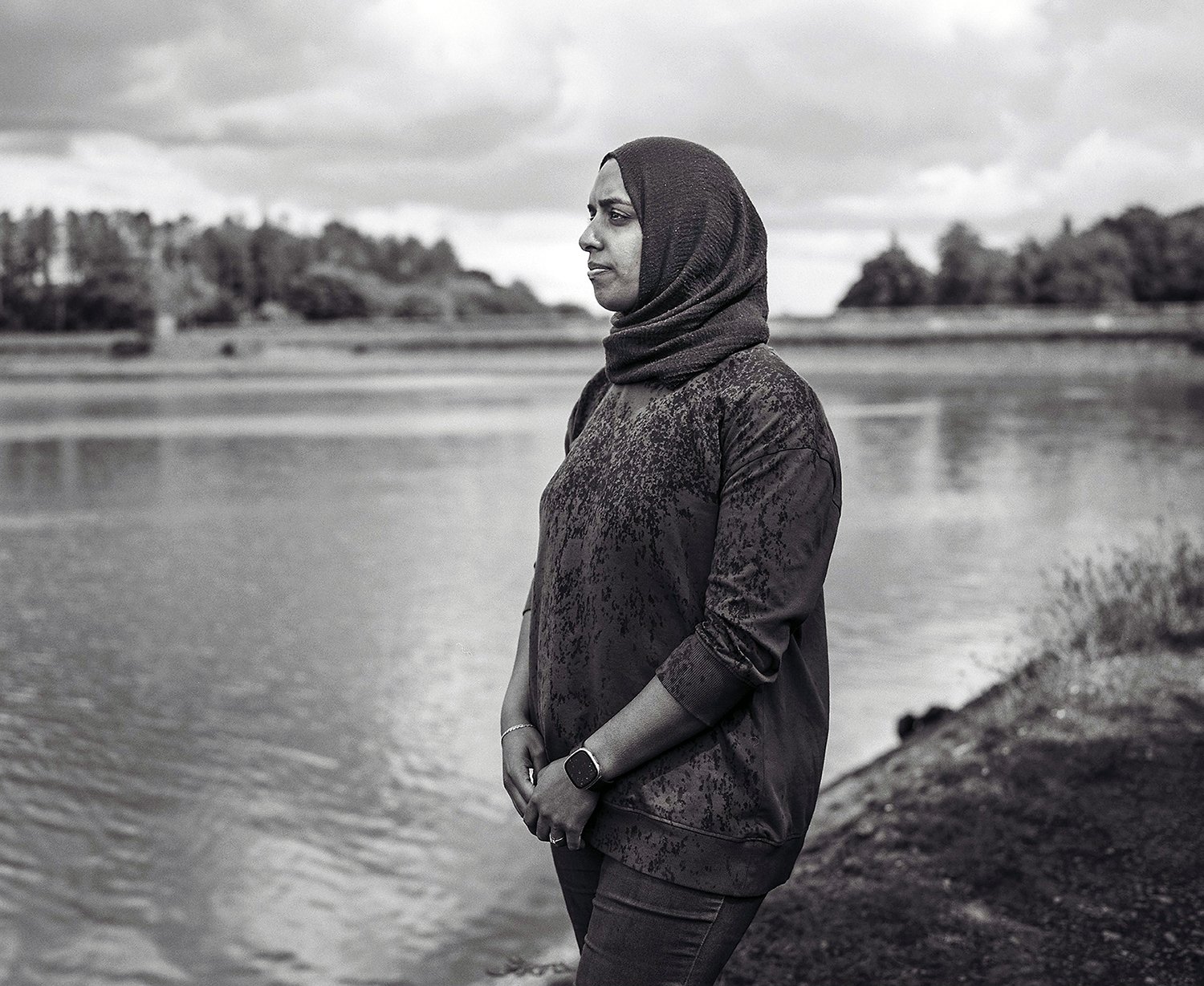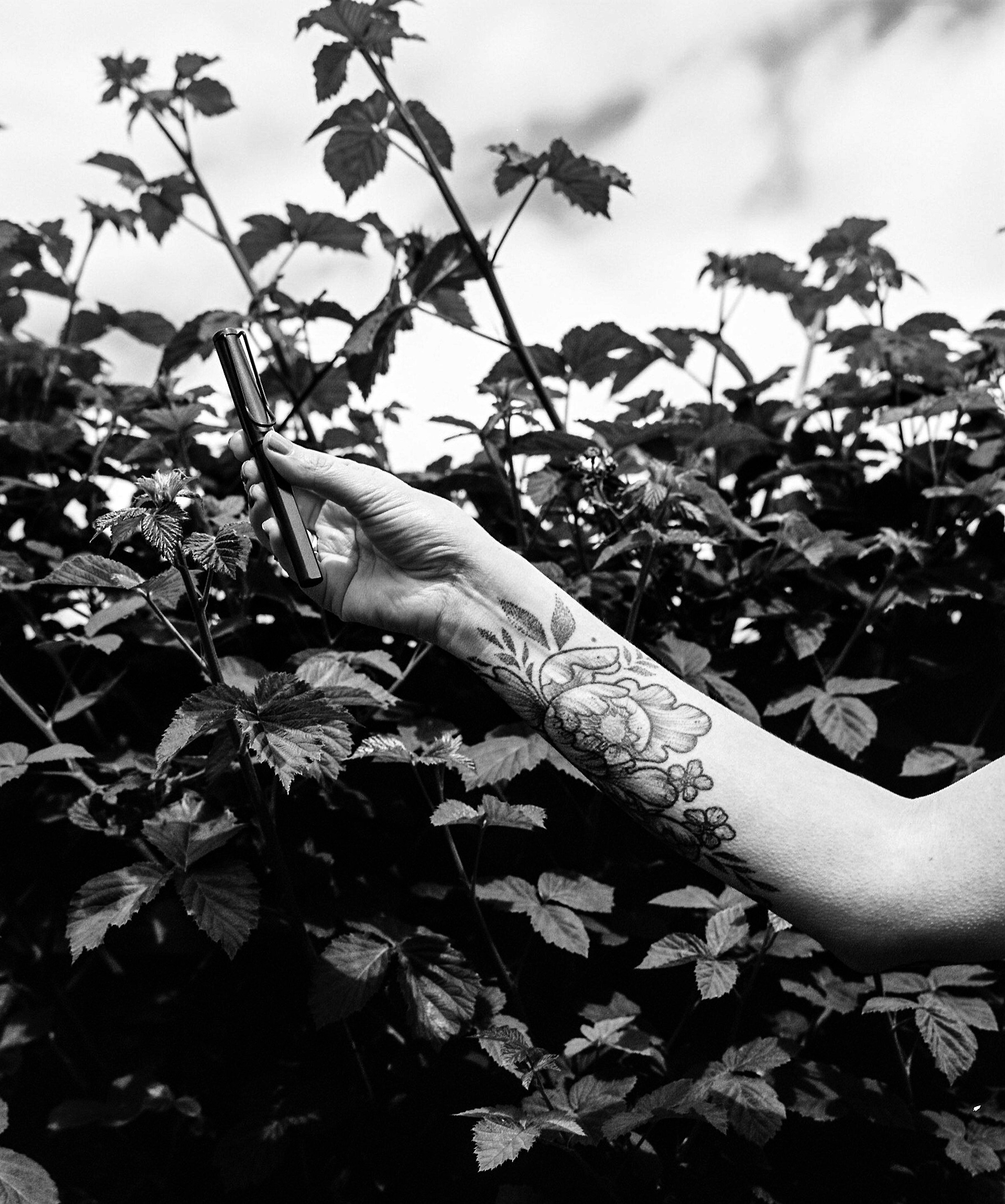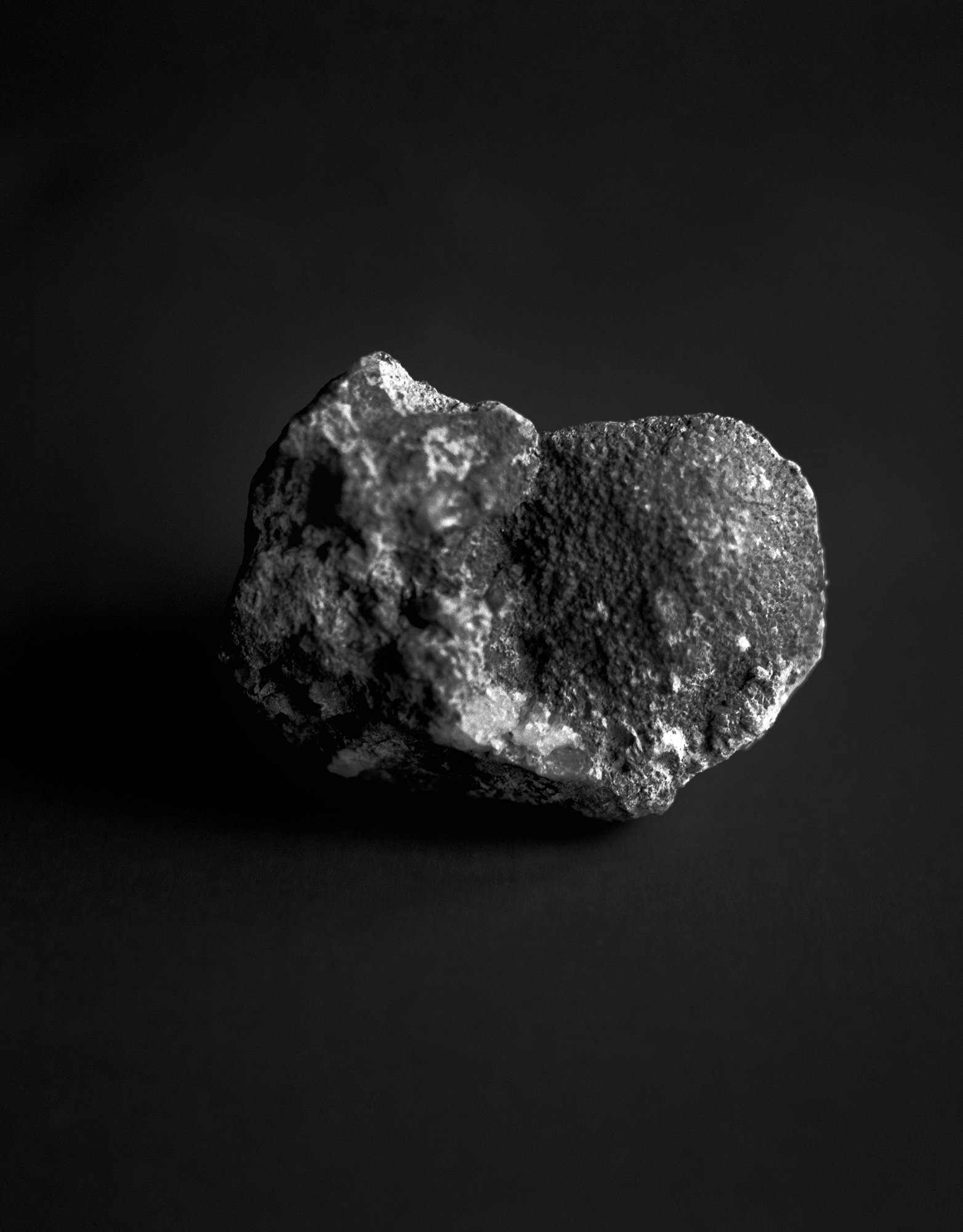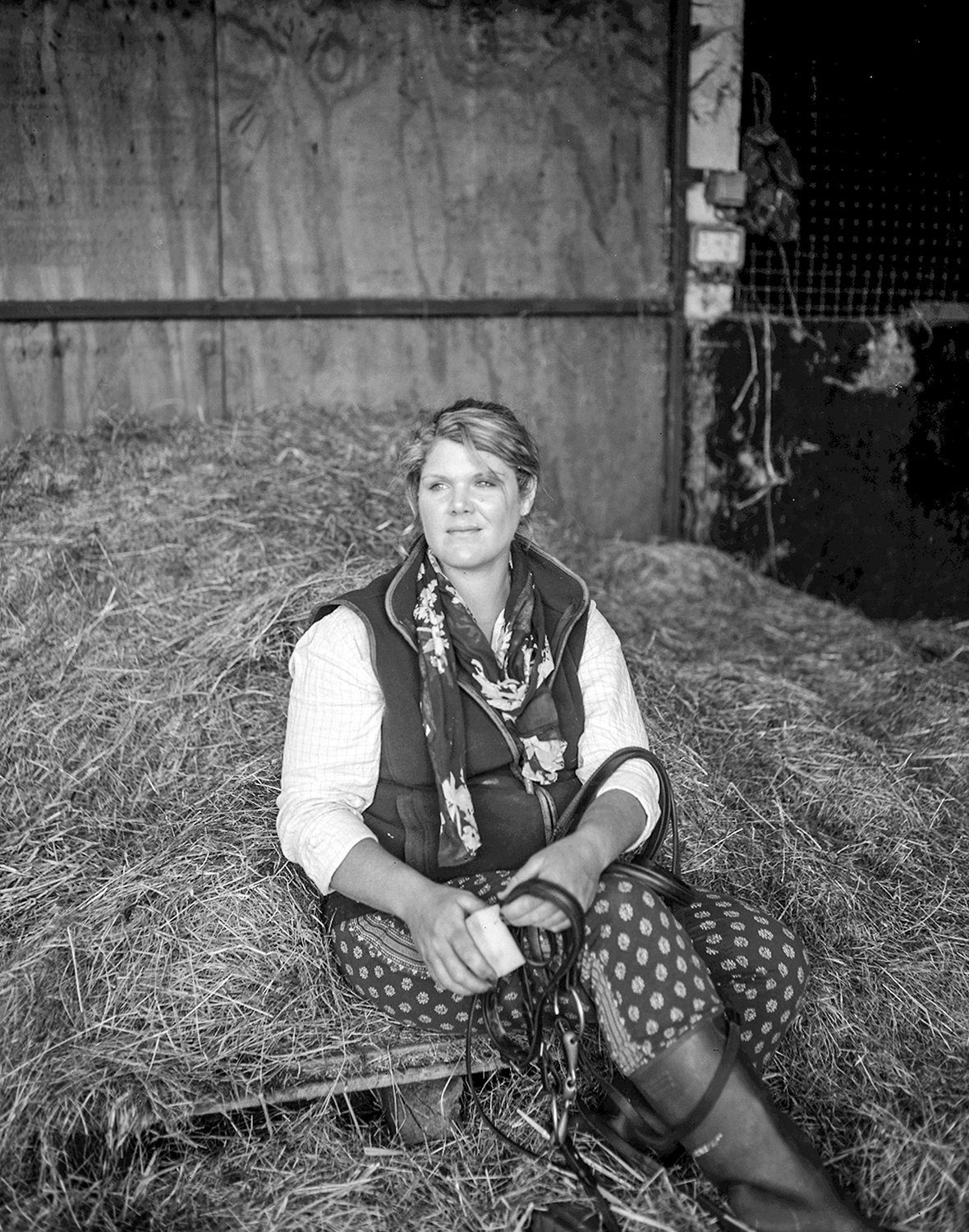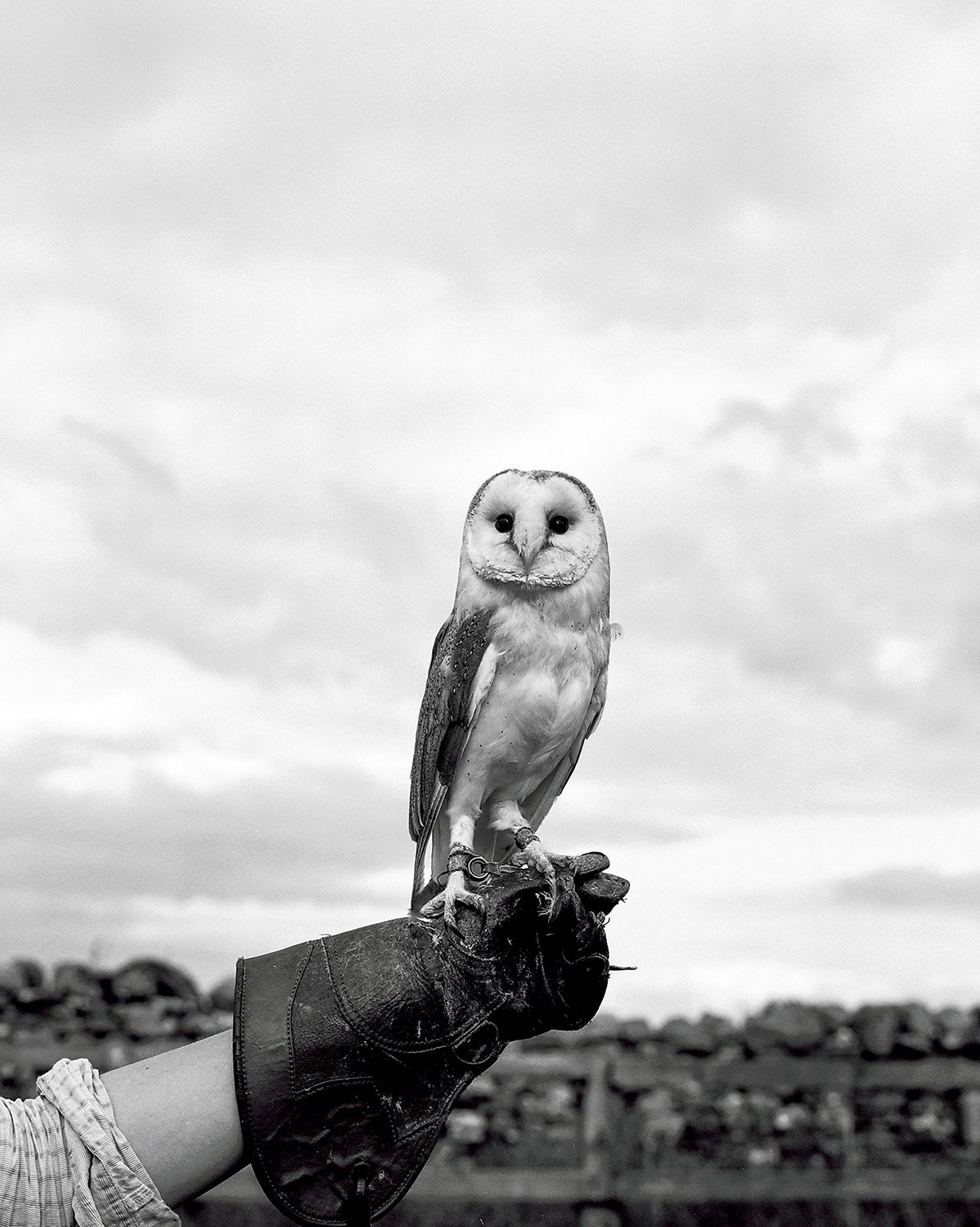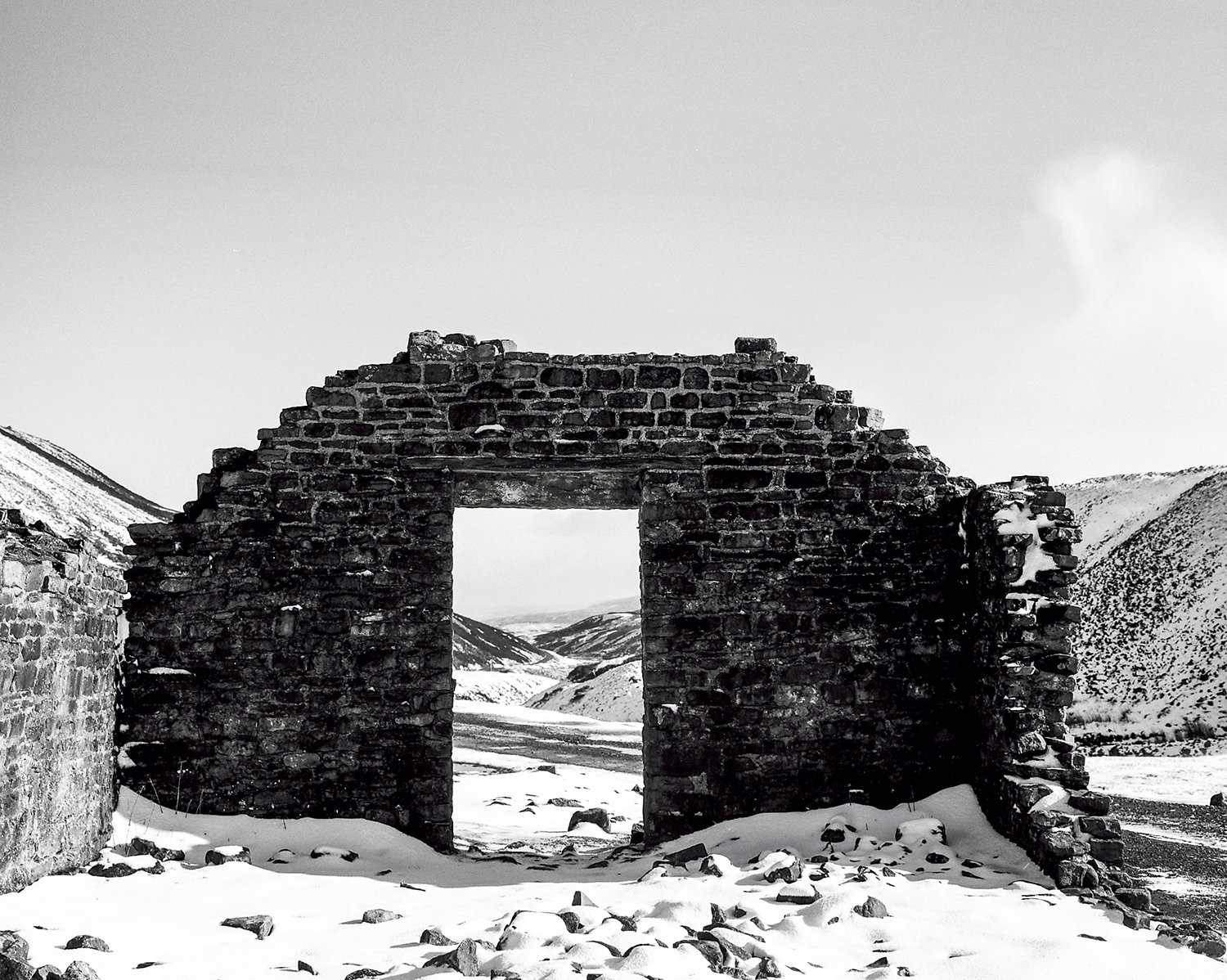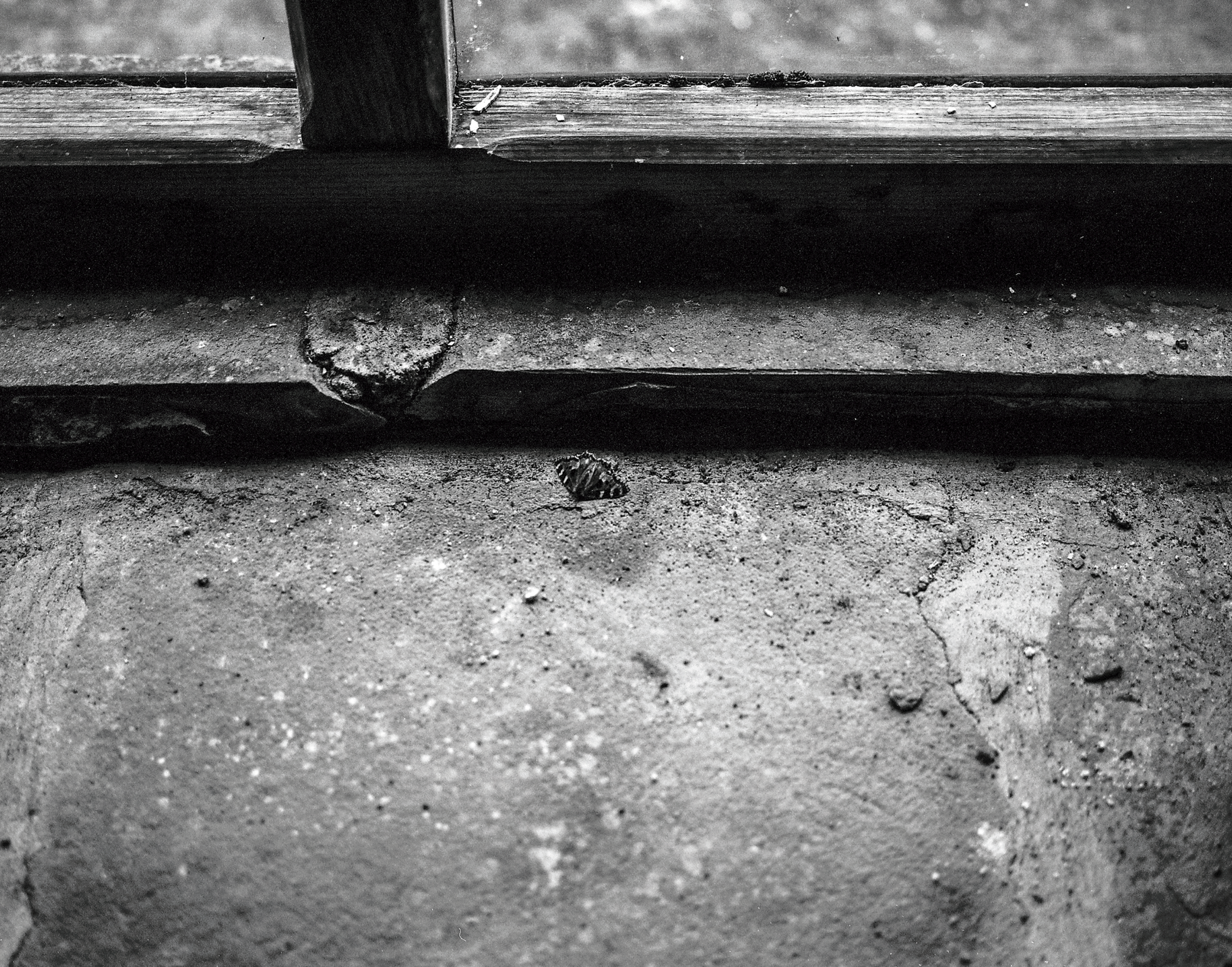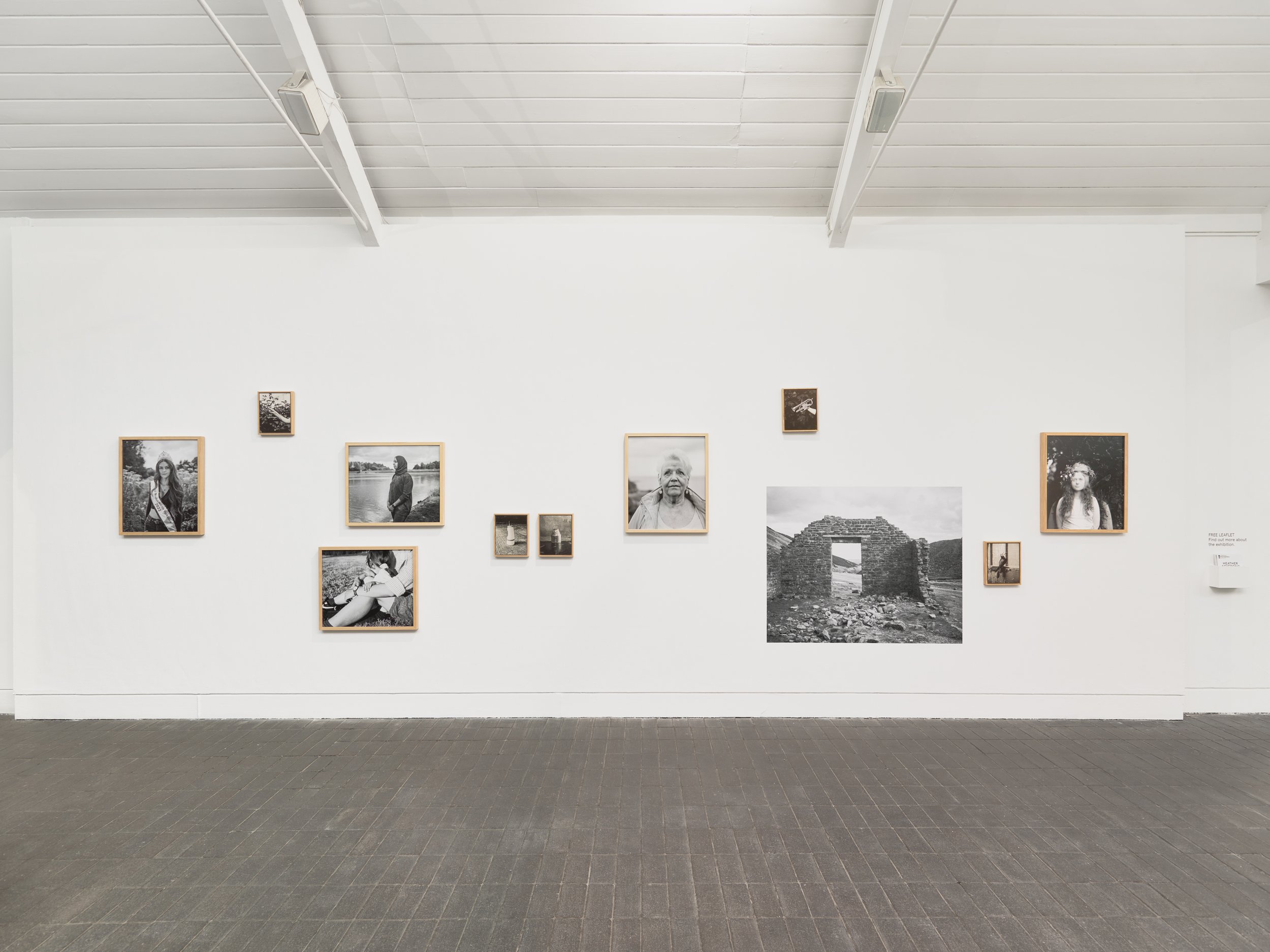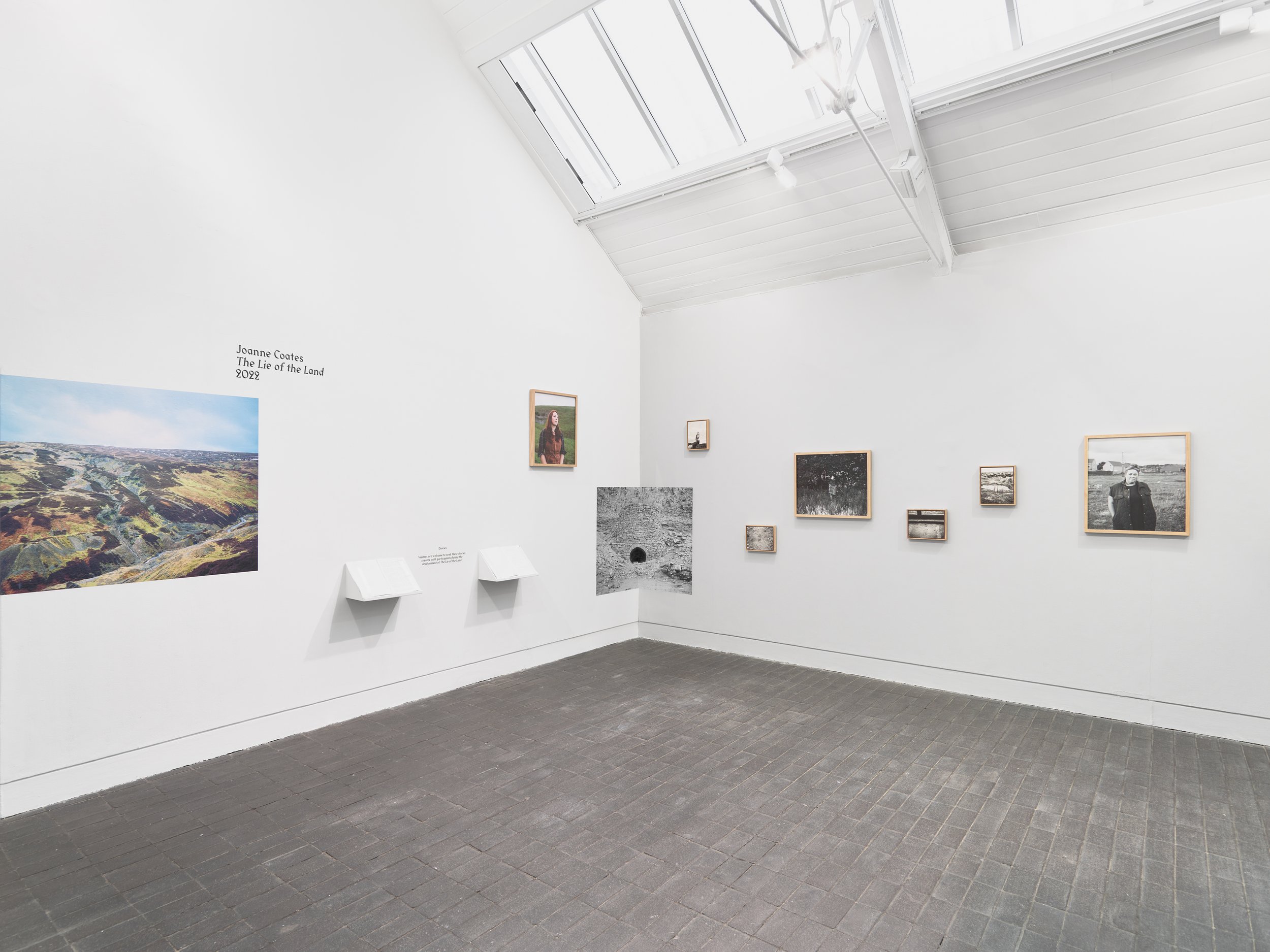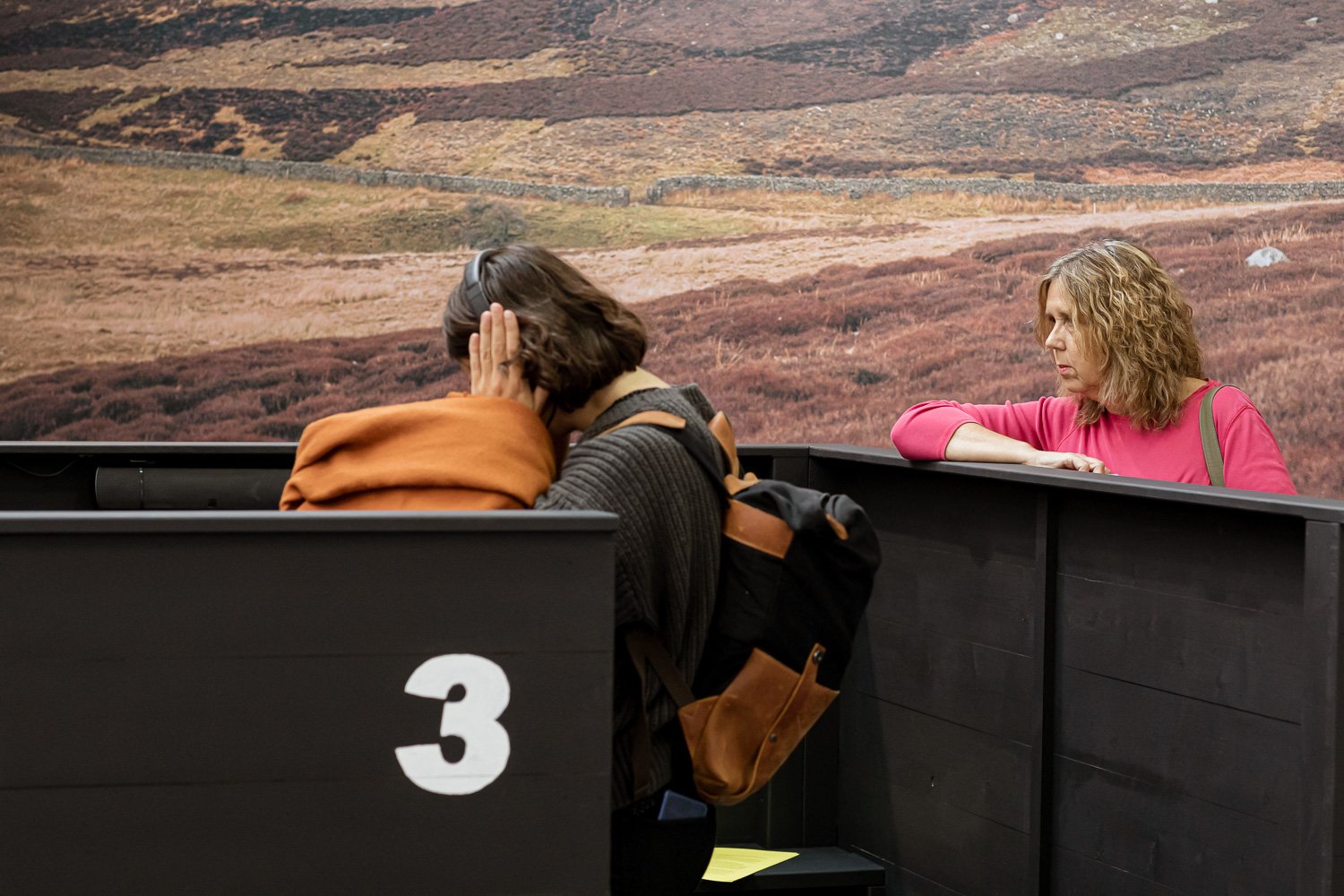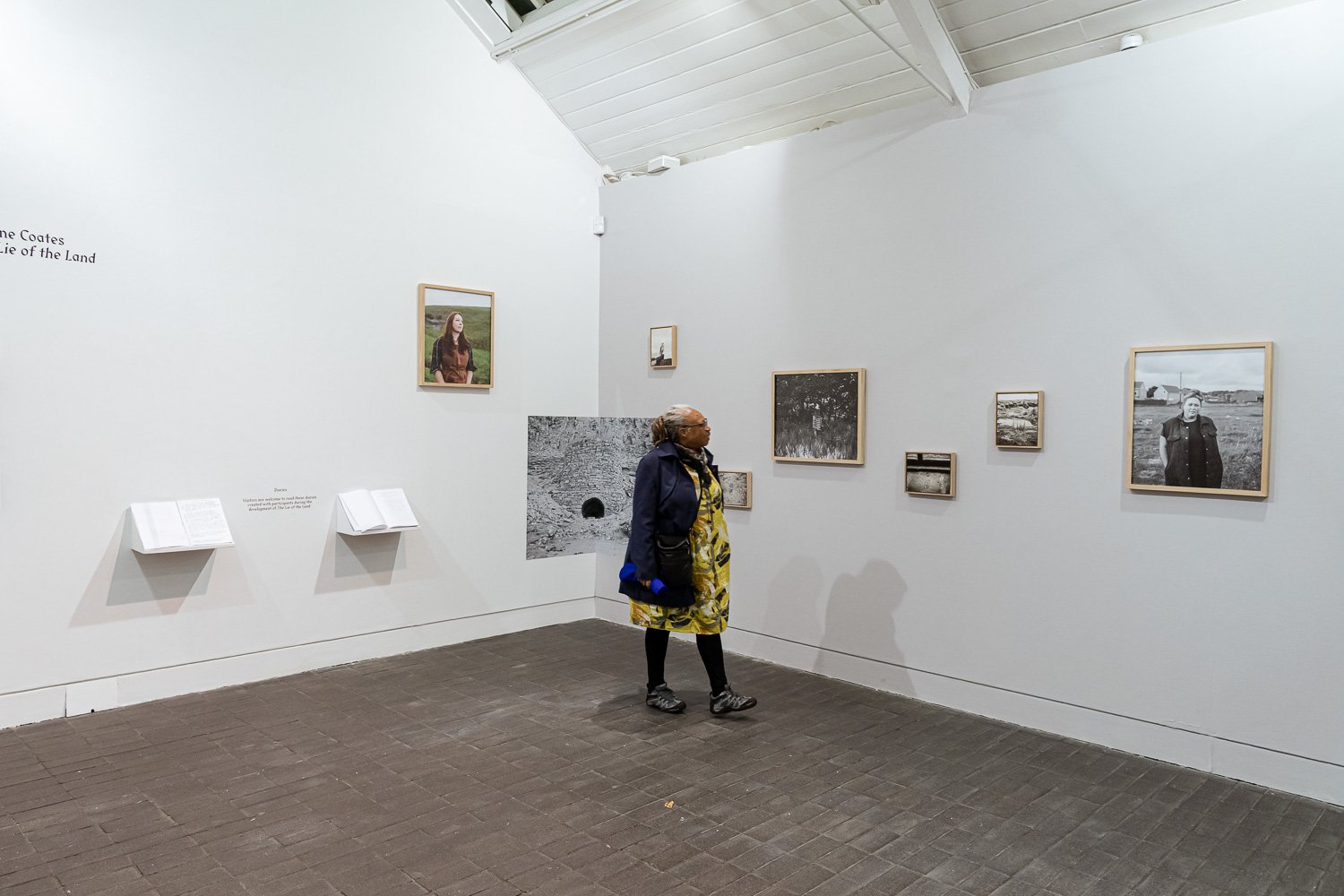Installation image, Jerwood Space London 2022.
The Lie of the Land explores the social history of the land looking at the hidden historical human impact on the countryside, narrating a story of gender and class that has long been forgotten, or never told. The series invites us to consider the human relationship with the land, to think about the future for its custodianship.
In the Lie of the Land, A collaboration with twelve women who identify as working class or low income living in rural areas in the North East of England.
The series is formed of large format co-created portraiture, landscape and small detailed still-lifes of the objects chosen by the women as identity markers. Accompanying the photographs are a sound piece, grouse butt with video and handwritten diaries.
A ravaged landscape, but once the start of the industrial revolution. In the late 18th century lead extraction and mining became more organized, leading to larger scale mines and exploitation of workers. Exploitation of the working class is echoed today in the hidden work of the women. Spoil heaps, structures, shafts stand as visual metaphors, markers and passages to the past, hinting at one of the earliest examples of the human touch on a poisoned landscape. Land sits barren and degraded, the communities of this area are broken up. The series shows the interconnected relationship between economics, consumption, and social capital. The market collapsed in 1880, and was followed by further collapses to coal. The story of cheaper imports tells us of something happening globally that is unique to the human relationship with the land. Economic prosperity passed through but at what cost, to the land and to those that labour?



